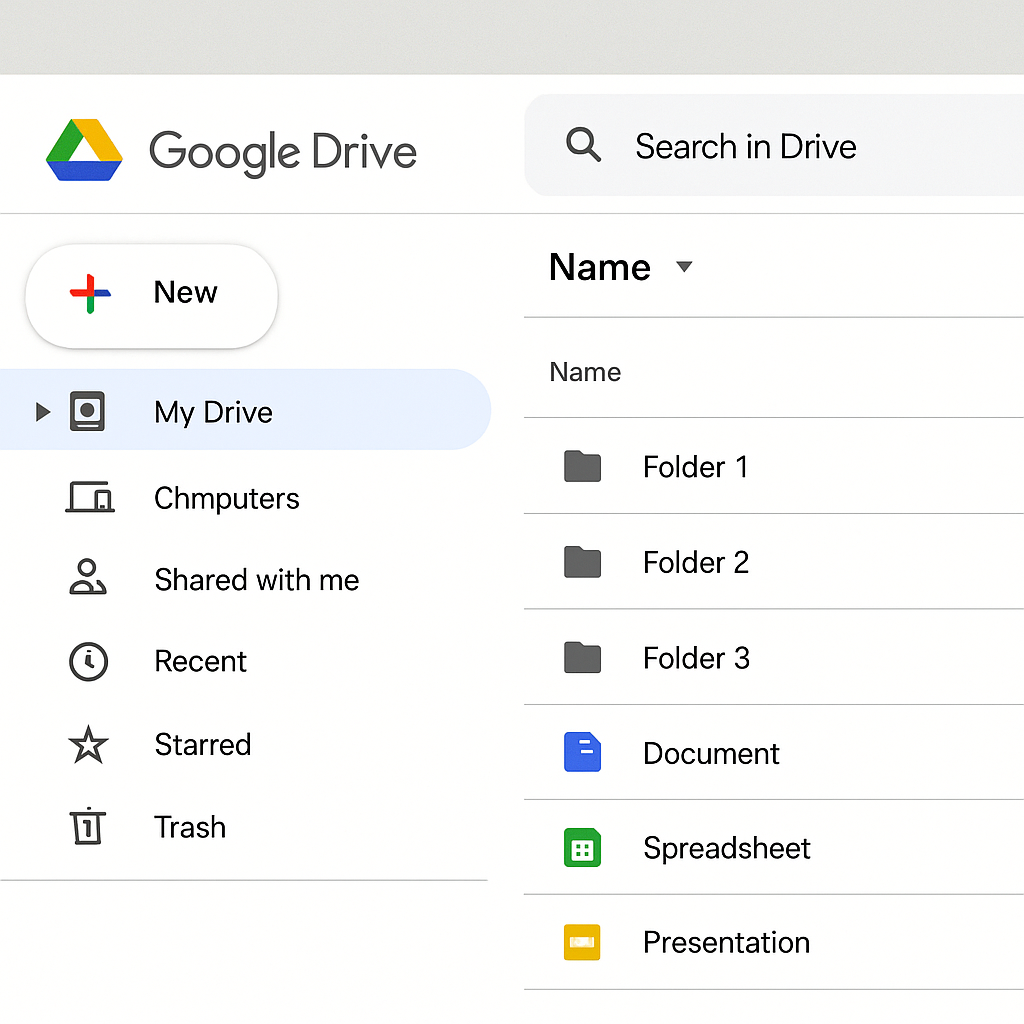Have you ever thought about starting your own tech blog? Maybe you’ve got a passion for gadgets and technology, or perhaps you enjoy writing and want to share your insights with the world. Whatever your motivation, starting a tech blog can be a rewarding venture, both personally and financially. In this guide, we’ll walk you through the steps to start a tech blog and make money from it.
Before diving into the how-to, let’s explore why you might want to start a tech blog. Tech blogs are an excellent way to share your passion for technology with others. They allow you to express your opinions, review the latest gadgets, and provide valuable insights to your readers. Moreover, a successful tech blog can become a source of income, allowing you to monetize your content in various ways.
Share Your Passion
Having a platform to express your love for technology can be incredibly fulfilling. It allows you to connect with like-minded individuals who share your interests. A tech blog enables you to discuss the latest trends, share your thoughts on new developments, and contribute to the broader technology community.
Build Your Personal Brand
A tech blog can serve as a vehicle to establish your personal brand within the tech industry. By consistently delivering quality content, you enhance your credibility and can become a recognized voice in your niche. This recognition can open doors to speaking engagements, collaborations, and even job opportunities in the tech sector.
Generate Income
Monetizing your tech blog can lead to substantial financial rewards. Whether through affiliate marketing, sponsored content, or selling digital products, a well-managed blog can become a lucrative income stream. Additionally, it provides an avenue for turning your hobby into a potential career, offering both financial and personal satisfaction.
Step 1: Choose Your Niche
The first step in starting a tech blog is choosing your niche. The tech world is vast, so narrowing down your focus will help you attract a specific audience. Here are a few niche ideas:
Gadget Reviews
Focusing on gadget reviews allows you to delve into the latest tech products. You can provide in-depth analyses and personal experiences with new devices, helping readers make informed purchasing decisions. Your insight can guide tech enthusiasts looking for the next big thing in the market.
Software Tutorials
Software tutorials offer a platform for teaching others how to use various applications. By creating step-by-step guides, you can help users solve problems and maximize their use of software tools. This niche can cater to both beginners and advanced users, expanding your potential audience.
Tech News
Covering tech news involves staying up-to-date with the latest industry developments. You can report on new product launches, mergers, and technological innovations. By providing timely updates, you position your blog as a go-to source for tech-savvy readers seeking the latest information.
Gaming Tech
Exploring gaming tech allows you to dive into the world of gaming consoles, accessories, and software. You can review the latest gaming gear, share gaming strategies, and discuss the future of gaming technology. This niche appeals to a passionate and engaged community eager for new insights and tips.
Emerging Technologies
Focusing on emerging technologies can set your blog apart from the rest. By exploring advancements in AI, blockchain, and other cutting-edge fields, you position your blog as forward-thinking and innovative. This niche attracts tech enthusiasts interested in the future of technology and its potential impact on society.
Step 2: Set Up Your Blog
Once you’ve chosen your niche, it’s time to set up your blog. Here’s how to get started:
Choose a Blogging Platform
There are several blogging platforms to choose from, but WordPress is the most popular due to its flexibility and ease of use. Other options include Blogger, Medium, and Wix. Choose a platform that suits your needs and technical skills.
WordPress
WordPress offers a robust set of features and customization options. Its extensive plugin library allows you to enhance your blog’s functionality, while its user-friendly interface makes it accessible to beginners. With a vast community of users, finding support and resources is easy.
Blogger
Blogger, powered by Google, is a straightforward platform perfect for beginners. It offers easy integration with other Google services and provides basic customization options. While it may lack the advanced features of WordPress, its simplicity can be appealing for new bloggers.
Medium
Medium is a platform focused on content and community. It allows you to reach a wide audience and engage with readers through its built-in social features. While it offers limited customization, Medium’s focus on writing can help you hone your craft and build a dedicated readership.
Wix
Wix provides a drag-and-drop interface, making it easy to design a visually appealing blog. It offers a range of templates and customization options, allowing you to create a unique blog without extensive technical knowledge. Wix is ideal for bloggers prioritizing design and aesthetics.
Pick a Domain Name
Your domain name is your blog’s address on the internet. It should be memorable, easy to spell, and related to your niche. Once you’ve chosen a domain name, you’ll need to register it with a domain registrar.
Brainstorming Ideas
Consider using keywords related to your niche when brainstorming domain names. This helps convey your blog’s focus to potential visitors. Keep it short and simple to ensure it’s easy to remember and type.
Checking Availability
Use domain registration services to check the availability of your chosen name. If your preferred domain is taken, consider variations or alternative extensions like .net or .tech. Ensure your domain is unique to avoid confusion with existing sites.
Registering Your Domain
Once you’ve settled on a domain name, register it with a reliable domain registrar. This process involves securing the rights to use the domain and typically includes an annual fee. Popular registrars like GoDaddy or Namecheap offer competitive pricing and additional services like domain privacy protection.
Select a Hosting Provider
A hosting provider stores your blog’s files and makes them accessible online. Look for a reliable hosting provider that offers good customer support and meets your budget. Some popular options include Bluehost, SiteGround, and HostGator.
Shared Hosting
Shared hosting is a cost-effective option for new bloggers. It involves sharing server resources with other websites, making it affordable but potentially slower during peak times. This type of hosting is suitable for blogs expecting moderate traffic.
VPS Hosting
Virtual Private Server (VPS) hosting provides more resources and control than shared hosting. It offers better performance and scalability, making it ideal for growing blogs. While more expensive, VPS hosting is a worthwhile investment for bloggers expecting increased traffic.
Dedicated Hosting
Dedicated hosting provides exclusive access to a server, ensuring optimal performance and reliability. This option is best for large blogs with significant traffic and resource demands. While costly, dedicated hosting offers unparalleled control and customization.
Design Your Blog
Choose a theme that reflects your blog’s style and niche. Most blogging platforms offer free and paid themes, which you can customize to suit your preferences. Make sure your blog is easy to navigate and mobile-friendly.
Selecting a Theme
Consider your blog’s aesthetic and functionality when choosing a theme. Look for designs that complement your niche and offer customization options. A well-chosen theme enhances user experience and encourages visitors to explore your content.
Customization Options
Utilize customization options to tailor your blog’s appearance. Adjust colors, fonts, and layouts to create a unique and cohesive look. Customization allows you to align your blog’s design with your brand and personal style.
Ensuring Mobile Responsiveness
With increasing mobile internet usage, ensuring your blog is mobile-friendly is crucial. Test your blog’s design on various devices to ensure it displays correctly. Mobile responsiveness enhances user experience and can positively impact your search engine rankings.
Step 3: Create Quality Content
Creating high-quality content is crucial for attracting and retaining readers. Here are some tips for producing engaging content:
Write Compelling Headlines
Your headlines should grab readers’ attention and make them want to click on your posts. Use action words, ask questions, or include numbers to make your headlines more enticing.
Crafting Engaging Titles
Start by brainstorming a list of potential titles for each post. Experiment with different formats, such as lists or how-tos, to see what resonates with your audience. Strong titles set the tone for your content and encourage readers to explore further.
Utilizing Keywords
Incorporate relevant keywords into your headlines to improve search engine visibility. Use tools like Google Keyword Planner to identify popular search terms related to your topic. Balancing keyword optimization with natural language is key to crafting effective headlines.
Testing and Iterating
Experiment with different headline styles and track their performance using analytics tools. Monitor click-through rates to determine which headlines resonate best with your audience. Continually refining your headlines can lead to improved engagement and traffic.
Provide Value
Your content should provide value to your readers, whether it’s through informative guides, in-depth reviews, or thought-provoking opinions. Focus on solving problems or answering questions your audience might have.
Identifying Audience Needs
Understanding your audience’s needs and interests is crucial for creating valuable content. Conduct surveys or engage with readers on social media to gather insights into their preferences. Tailoring your content to address their concerns enhances its relevance and appeal.
Delivering In-Depth Analysis
Providing detailed and well-researched information sets your blog apart from competitors. Back up your claims with data, examples, and expert opinions to establish credibility. In-depth content demonstrates your expertise and builds trust with your audience.
Encouraging Interaction
Invite readers to share their thoughts and experiences in the comments section. Engaging with your audience fosters a sense of community and encourages repeat visits. Responding to comments and questions also demonstrates your commitment to providing valuable insights.
Use Visuals
by KOBU Agency (https://unsplash.com/@kobuagency)
Incorporate visuals like images, infographics, and videos to make your content more engaging and easier to understand. Visuals can also help break up large blocks of text and improve your blog’s overall appearance.
Selecting Relevant Images
Choose images that complement and enhance your written content. High-quality visuals grab attention and provide context for your readers. Use original images or source them from reputable stock photo sites, ensuring proper attribution when necessary.
Creating Infographics
Infographics are an effective way to present complex information in a digestible format. Use online tools like Canva or Piktochart to design eye-catching and informative graphics. Infographics can be shared across social media, increasing your blog’s reach and visibility.
Incorporating Video Content
Videos add a dynamic element to your blog and can boost engagement. Create tutorial videos, product demos, or interviews to diversify your content offerings. Hosting videos on platforms like YouTube can drive traffic to your blog and expand your audience.
Optimize for SEO
Search engine optimization (SEO) helps your blog rank higher in search engine results, making it more visible to potential readers. Use keywords naturally throughout your content, optimize your images, and use internal and external links to improve your SEO.
Conducting Keyword Research
Identify relevant keywords and phrases that align with your blog’s content and audience. Use tools like Ahrefs or SEMrush to analyze keyword trends and competition. Incorporating these keywords strategically throughout your content enhances its searchability.
Enhancing On-Page SEO
Optimize your blog’s on-page elements, including titles, meta descriptions, and headers. Ensure each page has a unique and descriptive title that includes relevant keywords. Craft meta descriptions that entice readers to click through from search engine results.
Building Internal and External Links
Link to relevant content within your blog to guide readers to additional resources. Use external links to reputable sources to support your claims and enhance credibility. Building a network of links improves your blog’s SEO and provides value to your readers.
Step 4: Promote Your Blog
Creating great content is only half the battle; you also need to promote your blog to attract readers. Here are some strategies for promoting your tech blog:
Social Media
Share your blog posts on social media platforms like Facebook, Twitter, Instagram, and LinkedIn. Engage with your audience by responding to comments and participating in relevant discussions.
Choosing the Right Platforms
Identify the social media platforms where your target audience is most active. Tailor your content and engagement strategies to each platform’s unique features and user demographics. Focusing on the right platforms maximizes your reach and impact.
Crafting Shareable Content
Create content that resonates with your audience and encourages sharing. Use compelling visuals, catchy captions, and relevant hashtags to increase your posts’ visibility. Engaging content is more likely to be shared, expanding your blog’s reach.
Engaging with Your Audience
Interact with your followers by responding to comments and messages promptly. Participating in discussions and joining relevant groups can help build relationships and establish your presence in the community. Consistent engagement fosters loyalty and encourages repeat visits to your blog.
Guest Blogging
Write guest posts for other tech blogs to increase your exposure and build backlinks to your site. This can help you reach a wider audience and improve your blog’s SEO.
Finding Guest Blogging Opportunities
Identify blogs in your niche that accept guest contributions. Reach out to them with a well-crafted pitch that highlights your expertise and proposed topics. Building relationships with other bloggers can lead to valuable collaboration opportunities.
Crafting High-Quality Guest Posts
Deliver high-quality content that aligns with the host blog’s audience and style. Ensure your guest post provides value and reflects your expertise. A well-received guest post can drive traffic to your blog and enhance your reputation within the industry.
Leveraging Backlinks
Include relevant links to your blog within your guest posts to drive traffic and improve SEO. Focus on providing value rather than excessively promoting your content. Quality backlinks enhance your blog’s authority and search engine ranking.
Email Marketing
Build an email list of subscribers and send them regular updates about your latest content. Email marketing is an effective way to keep your audience engaged and drive traffic to your blog.
Building Your Email List
Encourage visitors to subscribe to your email list by offering incentives such as exclusive content or freebies. Use opt-in forms strategically placed on your blog to capture subscribers. Building a robust email list expands your audience and provides direct communication channels.
Crafting Compelling Newsletters
Create engaging newsletters that highlight your latest content and offer additional value. Personalize your emails to resonate with individual subscribers and encourage interaction. A well-crafted newsletter strengthens your relationship with your audience and encourages repeat visits.
Analyzing Email Performance
Track key metrics such as open rates, click-through rates, and conversions to assess your email marketing effectiveness. Use insights from analytics to refine your strategies and improve engagement. Regularly evaluating performance ensures your emails continue to provide value to your subscribers.
Step 5: Monetize Your Blog
Once your blog is up and running, you can start monetizing it. Here are some popular monetization methods:
Affiliate Marketing
Promote products or services related to your niche and earn a commission for each sale made through your affiliate links. Join affiliate programs like Amazon Associates, ShareASale, or Commission Junction to get started.
Choosing the Right Programs
Select affiliate programs that align with your niche and audience interests. Look for reputable programs offering competitive commission rates and quality products. Partnering with suitable affiliates enhances your credibility and increases conversion potential.
Integrating Affiliate Links
Incorporate affiliate links naturally within your content, ensuring they complement your posts. Provide genuine recommendations and disclose your affiliate relationships to maintain transparency with your audience. Thoughtful integration of affiliate links enhances trust and encourages conversions.
Tracking and Optimizing Performance
Monitor the performance of your affiliate links using analytics tools. Analyze metrics like click-through rates and conversions to identify successful strategies. Continuously optimizing your approach can maximize your affiliate marketing earnings.
Sponsored Content
Collaborate with brands to create sponsored content or product reviews. This can be a lucrative source of income, especially if you have a large and engaged audience.
Identifying Potential Partners
Identify brands and companies that align with your blog’s niche and values. Reach out with a professional pitch highlighting the benefits of collaboration. Building relationships with potential sponsors opens doors to mutually beneficial opportunities.
Creating Authentic Sponsored Content
Ensure sponsored content aligns with your blog’s voice and provides value to your audience. Clearly disclose sponsored posts to maintain transparency and credibility. Authentic and well-integrated sponsored content enhances your reputation and fosters reader trust.
Negotiating Terms and Compensation
Negotiate terms and compensation that reflect your blog’s value and reach. Consider factors like content creation costs, audience size, and expected engagement. Fair compensation ensures a mutually beneficial partnership and encourages future collaborations.
Display Advertising
Sign up for advertising networks like Google AdSense to display ads on your blog. You’ll earn money based on the number of impressions or clicks the ads receive.
Choosing an Advertising Network
Select an advertising network that aligns with your blog’s content and audience. Evaluate networks based on factors like ad relevance, payout rates, and user experience. Choosing the right network ensures effective monetization without compromising user experience.
Placing Ads Strategically
Position ads strategically within your blog to maximize visibility without disrupting the user experience. Experiment with different ad placements to identify what works best for your audience. Strategic ad placement enhances earnings and maintains a positive reader experience.
Monitoring Ad Performance
Track ad performance metrics such as click-through rates and earnings to assess effectiveness. Use insights to refine your ad placement and optimize revenue. Regular monitoring ensures your advertising strategy continues to deliver results.
Sell Digital Products
Create and sell digital products like e-books, courses, or printables related to your niche. This can be a great way to leverage your expertise and generate passive income.
Identifying Product Opportunities
Identify digital products that align with your expertise and audience needs. Consider creating resources that provide valuable insights or solve specific problems. Offering relevant digital products enhances your blog’s value and generates additional income.
Developing High-Quality Products
Invest time and effort into creating high-quality digital products that meet your audience’s expectations. Use engaging formats and professional design to enhance appeal. High-quality products build trust and encourage repeat purchases.
Marketing Your Products
Promote your digital products through your blog, social media, and email marketing campaigns. Highlight the benefits and unique features of your products to attract potential buyers. Effective marketing ensures your products reach a wider audience and drive sales.
Conclusion
Starting a tech blog and making money from it requires dedication, hard work, and patience. By choosing a niche, creating quality content, promoting your blog, and monetizing it effectively, you can turn your passion for technology into a profitable venture. So, what are you waiting for? Start your tech blog today and share your love for gadgets with the world!






